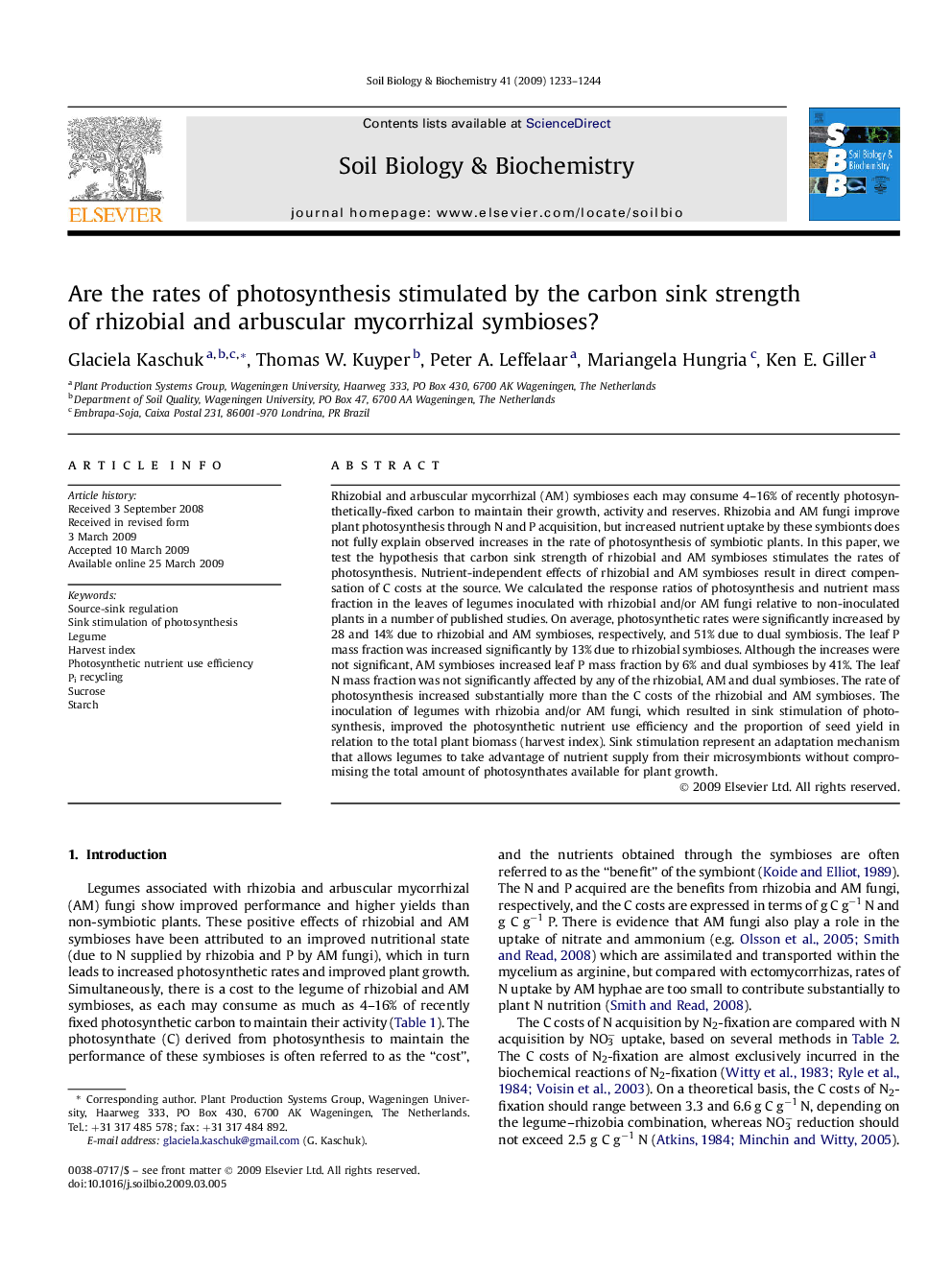| کد مقاله | کد نشریه | سال انتشار | مقاله انگلیسی | نسخه تمام متن |
|---|---|---|---|---|
| 2025626 | 1070004 | 2009 | 12 صفحه PDF | دانلود رایگان |
عنوان انگلیسی مقاله ISI
Are the rates of photosynthesis stimulated by the carbon sink strength of rhizobial and arbuscular mycorrhizal symbioses?
دانلود مقاله + سفارش ترجمه
دانلود مقاله ISI انگلیسی
رایگان برای ایرانیان
موضوعات مرتبط
علوم زیستی و بیوفناوری
علوم کشاورزی و بیولوژیک
دانش خاک شناسی
پیش نمایش صفحه اول مقاله

چکیده انگلیسی
Rhizobial and arbuscular mycorrhizal (AM) symbioses each may consume 4-16% of recently photosynthetically-fixed carbon to maintain their growth, activity and reserves. Rhizobia and AM fungi improve plant photosynthesis through N and P acquisition, but increased nutrient uptake by these symbionts does not fully explain observed increases in the rate of photosynthesis of symbiotic plants. In this paper, we test the hypothesis that carbon sink strength of rhizobial and AM symbioses stimulates the rates of photosynthesis. Nutrient-independent effects of rhizobial and AM symbioses result in direct compensation of C costs at the source. We calculated the response ratios of photosynthesis and nutrient mass fraction in the leaves of legumes inoculated with rhizobial and/or AM fungi relative to non-inoculated plants in a number of published studies. On average, photosynthetic rates were significantly increased by 28 and 14% due to rhizobial and AM symbioses, respectively, and 51% due to dual symbiosis. The leaf P mass fraction was increased significantly by 13% due to rhizobial symbioses. Although the increases were not significant, AM symbioses increased leaf P mass fraction by 6% and dual symbioses by 41%. The leaf NÂ mass fraction was not significantly affected by any of the rhizobial, AM and dual symbioses. The rate of photosynthesis increased substantially more than the C costs of the rhizobial and AM symbioses. The inoculation of legumes with rhizobia and/or AM fungi, which resulted in sink stimulation of photosynthesis, improved the photosynthetic nutrient use efficiency and the proportion of seed yield in relation to the total plant biomass (harvest index). Sink stimulation represent an adaptation mechanism that allows legumes to take advantage of nutrient supply from their microsymbionts without compromising the total amount of photosynthates available for plant growth.
ناشر
Database: Elsevier - ScienceDirect (ساینس دایرکت)
Journal: Soil Biology and Biochemistry - Volume 41, Issue 6, June 2009, Pages 1233-1244
Journal: Soil Biology and Biochemistry - Volume 41, Issue 6, June 2009, Pages 1233-1244
نویسندگان
Glaciela Kaschuk, Thomas W. Kuyper, Peter A. Leffelaar, Mariangela Hungria, Ken E. Giller,